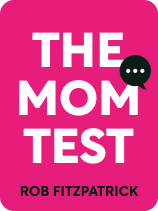

This article is an excerpt from the Shortform book guide to "The Mom Test" by Rob Fitzpatrick. Shortform has the world's best summaries and analyses of books you should be reading.
Like this article? Sign up for a free trial here.
Do you prefer formal or informal meetings? What are the benefits and downsides of both?
When meeting with potential clients, Rob Fitzpatrick in The Mom Test suggests starting out with informal meetings to get to know the client. If that doesn’t work, he says you should resort to a more formal setting.
Check out the benefits of both formal and informal meetings to see what’s right for you.
Seeking Informal Conversations With Potential Customers
When the time comes to learn from potential customers, Fitzpatrick makes two suggestions: formal and informal meetings, but says to stick to informal conversations rather than official meetings. Customers are more likely to open up about their lives if they don’t feel pressured to give high-quality feedback. In a casual setting, they often won’t know you’re conducting market research at all—they’ll just think you’re interested in their lives.
You can have informal feedback conversations anywhere—at the office water cooler, at a family reunion, or waiting for the bus. If you have your three learning objectives already in mind, you’ll be ready to learn from potential customers anytime. The vast majority of these conversations will take less than 15 minutes, making them far more efficient than scheduled business meetings.
(Shortform note: You may feel anxious about striking up informal conversations with total strangers to get them to open up about their lives. Psychologists offer several tips to help you overcome this fear: Ask yourself what you’re afraid of, then dissect whether or not these fears are realistic. Practice deep breathing exercises to calm your body in stressful moments. Finally, if you can, just start talking to strangers despite your fear—after you face the same fearful situation enough times without any negative consequences, your anxiety will likely go away.)
Where to Start Informal Conversations With Potential Customers
To initiate informal conversations with potential customers, Fitzpatrick suggests finding any excuse you can to talk to people in your target customer segment. People love talking about their lives and problems, so most of the time it’ll be easy to convince them to chat. Visit places where your potential customers’ community likes to spend time—for example, look for potential customers for your e-reader at bookstores. You could even bring the community to you by organizing meetups for people in your customer segment, like a productivity seminar for people who work from home.
(Shortform note: Instead of seeking out potential customers in their communities, it may be easier to reach out to those already around you—people in your community. In Sell or Be Sold, Grant Cardone recommends adding friends, family, and customers from the past to your business network. It’s much easier to message an old friend on Facebook than to stake out public spaces or organize a community meetup. Additionally, any business transaction, including feedback conversations, will be easier because you two already know each other. You’ll have an easier time gathering details about their life because you’re building on the knowledge you already have.)
If Necessary, Schedule Formal Meetings
If you’ve chosen to sell to specialized professionals in an established industry (people you wouldn’t ordinarily cross paths with), you may need to schedule formal meetings to gather information. In formal meetings, Fitzpatrick mandates making clear that you’re seeking details about the customer’s life and nothing more. Otherwise, you risk the customer assuming that it’s a sales meeting, which puts focus on you and your business rather than them and their needs and goals.
(Shortform note: It may seem intimidating to reach out and schedule formal meetings with specialized professionals since they’re presumably busy with valuable, important work. However, if you clarify that all you want from them is information, many professionals will be glad to give you their time, as being an advisor has its own intrinsic rewards: They’ll feel good about helping out someone in need (you) and gain a new appreciation for their own expertise.)
To schedule formal meetings with specialized professionals without any personal connections in the industry, you might try cold calling—contacting strangers in your customer segment out of the blue. While Fitzpatrick acknowledges that cold calls can be nerve-wracking and frustrating, he says not to get discouraged by frequent rejection. If you find just one or two good leads, you can often leverage those into further connections by asking for introductions to these professionals’ business networks.
(Shortform note: You may feel uncomfortable about cold calling because you don’t want to be an unwelcome interruption to someone else’s day. Unfortunately, in New Sales. Simplified., Mike Weinberg explains that this attitude is self-defeating: If you make cold calls believing that customers don’t want to talk to you, they won’t. Instead, since the customer segment you’re calling has a problem you’re trying to solve, you can think of yourself as a helpful ally that people would be grateful to receive a call from. Customers who sense this selfless point of view will be less likely to resist if you ask to meet others in their business network.)

———End of Preview———
Like what you just read? Read the rest of the world's best book summary and analysis of Rob Fitzpatrick's "The Mom Test" at Shortform.
Here's what you'll find in our full The Mom Test summary:
- How to ask the right questions to receive brutal honesty from anyone—even your mom
- How to use the “Mom Test” to gather objective feedback about your business or product
- How to extract the most important information from feedback conversations






